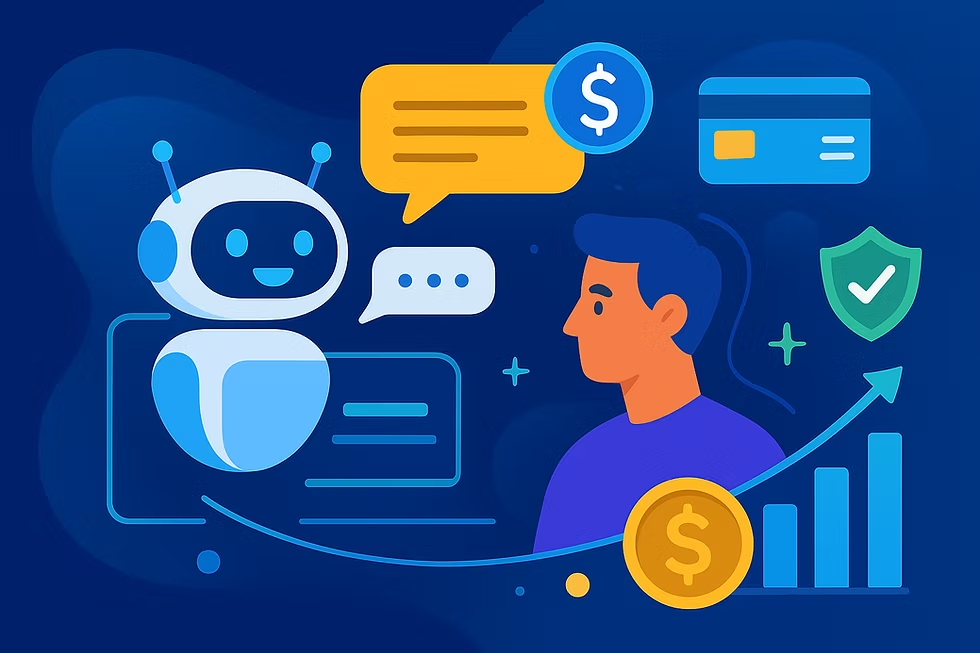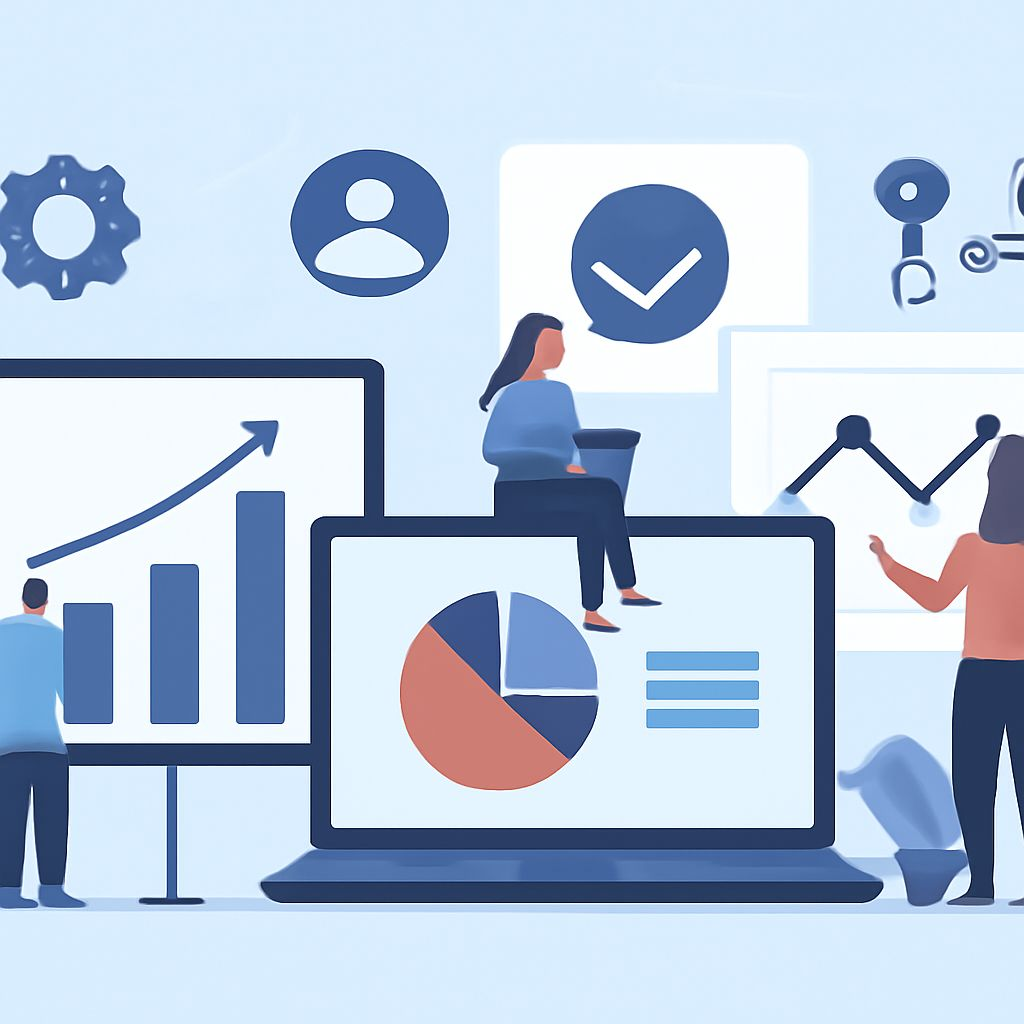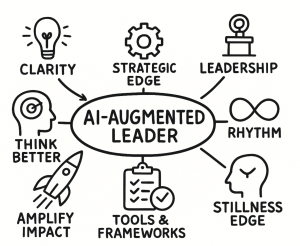Discover how Enterprise-Grade AI Frameworks enable scalable, secure, and adaptive intelligence across modern enterprises, transforming data into actionable insights and business advantage.

-
Introduction
-
What Are Enterprise-Grade AI Frameworks?
-
Core Attributes of Enterprise-Grade AI Frameworks
-
Architectural Blueprint
-
Leading Enterprise-Grade AI Frameworks
-
Business Value and ROI
-
Implementation Strategy
-
Real-World Applications
-
Security, Compliance, and Ethical AI
-
The Future of AI Frameworks
-
Conclusion
Enterprise-Grade AI frameworks are revolutionizing how organizations operate in a data-driven economy. Businesses now compete on intelligence rather than just products or speed. Unlike experimental AI tools, these frameworks provide scalable, compliant, and secure systems that unify data pipelines, AI models, and decision-making into one cohesive infrastructure.
They support everything from predictive analytics to generative AI, allowing enterprises to innovate continuously and make intelligent, real-time decisions.
An Enterprise-Grade AI Framework is a complete AI infrastructure that orchestrates:
-
Data ingestion and preparation
-
Model training and testing
-
Deployment and scaling
-
Monitoring and governance
-
Continuous learning and optimization
It’s designed for reliability, security, and integration across hybrid and multi-cloud environments, bridging the gap between AI experimentation and enterprise-scale execution.
In today’s data-driven economy, enterprises no longer compete solely on products, services, or speed—they compete on intelligence. Every interaction, transaction, and operation now generates data that holds transformative potential. To harness this potential, organizations are shifting from traditional digital architectures toward enterprise-grade AI frameworks—robust ecosystems that operationalize artificial intelligence at scale.
Unlike experimental or departmental AI tools, enterprise-grade AI frameworks are built for resilience, compliance, scalability, and real-time intelligence. They unify data pipelines, machine learning models, and decision systems into one cohesive infrastructure—enabling businesses to innovate continuously, respond intelligently, and outperform competitors.
From predictive analytics and automation to generative AI and self-optimizing systems, enterprise-grade AI frameworks are redefining how modern organizations think, build, and operate in the age of intelligent transformation.
Defining Enterprise-Grade AI Frameworks
At its core, an Enterprise-Grade AI Framework is not just a toolkit—it’s a complete infrastructure for intelligence. It orchestrates every layer of the AI lifecycle:
- Data ingestion and preparation
- Model training and testing
- Deployment and scaling
- Monitoring and governance
- Continuous learning and optimization
The “enterprise-grade” distinction implies a system designed with mission-critical reliability, security governance, and interoperability across hybrid and multi-cloud environments.
While startups might thrive on lightweight frameworks, global enterprises require platforms that align AI with strategic, regulatory, and ethical imperatives.
These frameworks bridge the gap between experimentation and enterprise execution—transforming data into intelligence and intelligence into enterprise advantage.
Core Attributes of an Enterprise-Grade AI Framework
To qualify as “enterprise-grade,” an AI framework must deliver more than algorithms—it must enable an AI-driven organization. Here are the foundational attributes:
1. Scalability Across Systems and Geographies
Enterprise AI must serve global operations seamlessly. Frameworks like TensorFlow Enterprise, AWS SageMaker, and Azure AI are engineered to scale workloads across distributed data centers while maintaining consistency and speed.
2. Robust Governance and Compliance
Enterprises operate within complex regulatory ecosystems (GDPR, HIPAA, SOC2). Enterprise-grade AI frameworks embed auditable model governance, bias monitoring, and traceable lineage to ensure responsible AI at scale.
3. Security and Data Integrity
From encryption to access controls, these frameworks ensure that every stage of the AI lifecycle—data collection, model training, inference—is secured by design.
4. Interoperability and Flexibility
They support hybrid and multi-cloud environments, allowing seamless integration with existing infrastructure—whether it’s SAP, Salesforce, or proprietary data lakes.
5. Continuous Learning and Model Lifecycle Management
AI in the enterprise is dynamic. Frameworks leverage MLOps (Machine Learning Operations) to automate retraining, testing, and deployment, ensuring models evolve with changing business dynamics.
Architectural Blueprint of an Enterprise-Grade AI Framework

The architecture of an enterprise-grade AI framework resembles a digital nervous system—a layered structure connecting data, intelligence, and action.
1. Data Foundation Layer
Data pipelines form the backbone, integrating structured and unstructured data from multiple sources—IoT sensors, CRM, ERP, and customer touchpoints. Modern frameworks employ ETL automation, data virtualization, and real-time streaming for agility.
2. AI Model Layer
This layer enables model building, training, and optimization using both machine learning and deep learning architectures. It supports frameworks like TensorFlow, PyTorch, and Scikit-learn, often enhanced by AutoML capabilities for speed and precision.
3. MLOps and Orchestration Layer
Here, automation governs the AI lifecycle—enabling CI/CD pipelines for models, real-time performance monitoring, and rollback mechanisms. This ensures enterprise reliability comparable to software DevOps systems.
4. Integration and API Layer
APIs and microservices connect AI insights to business applications—embedding intelligence into workflows, customer portals, or analytics dashboards.
5. Governance, Security & Compliance Layer
Every process is logged, encrypted, and monitored. AI ethics, explainability, and compliance protocols ensure trust and transparency in automated decisions.
6. Experience & Insight Layer
The front-facing layer delivers actionable intelligence through dashboards, predictive visualizations, and natural language insights—empowering human decision-makers with augmented clarity.
Leading Enterprise-Grade AI Frameworks Powering the Future
Here’s a look at the industry-leading AI frameworks that define the enterprise landscape in 2025:
1. TensorFlow Enterprise (Google Cloud AI)
TensorFlow Enterprise combines open-source innovation with Google Cloud’s reliability. It provides optimized infrastructure, long-term support, and integration with Vertex AI—allowing organizations to deploy models globally with built-in compliance and monitoring.
2. AWS SageMaker
AWS SageMaker offers a fully managed service for building, training, and deploying models. With MLOps automation, scalable infrastructure, and advanced governance, it empowers enterprises to transition from experimentation to production in record time.
3. Azure AI & Machine Learning Studio
Microsoft’s Azure AI Framework integrates AutoML, Cognitive Services, and Azure OpenAI—making it a powerhouse for organizations investing in AI-driven innovation, customer intelligence, and hybrid cloud scalability.
4. IBM Watson Studio
A pioneer in enterprise AI, IBM Watson Studio emphasizes explainability, governance, and model fairness. Its integration with IBM Cloud Pak for Data delivers end-to-end lifecycle management for enterprise compliance needs.
5. Databricks AI Platform
Built on lakehouse architecture, Databricks unifies data engineering and machine learning workflows—allowing enterprises to manage massive datasets and train models at hyperscale.
Each framework embodies the same strategic promise: to operationalize intelligence without compromising control, compliance, or scalability.
The Business Value of Enterprise-Grade AI Frameworks
The shift toward enterprise-grade AI is not just technological—it’s strategic and economic. These frameworks deliver measurable business outcomes:
1. Accelerated Innovation
By standardizing the AI lifecycle, enterprises can move from pilot to production faster—unlocking innovation cycles that were previously impossible.
2. Enhanced Decision Velocity
With real-time insights powered by AI, organizations gain the agility to pivot strategies instantly—whether in supply chains, customer engagement, or market forecasting.
3. Operational Efficiency
AI-driven automation reduces manual workload, optimizes resources, and enhances productivity across departments.
4. Risk Mitigation and Governance
Built-in monitoring and compliance frameworks reduce reputational and regulatory risks associated with biased or opaque AI models.
5. Sustainable Scalability
Enterprises can scale AI workloads without compromising performance—supporting millions of inferences per second across multiple geographies.
In essence, enterprise-grade AI frameworks transform data into intelligence, intelligence into insight, and insight into enterprise advantage.
Implementing an Enterprise-Grade AI Strategy

Building an enterprise AI ecosystem is a transformation journey—not a plug-and-play deployment. A successful implementation strategy involves four critical dimensions:
1. Establish AI Governance and Leadership
AI transformation begins with executive alignment. CIOs and Chief Data Officers must define governance models that balance innovation with compliance.
2. Build a Scalable AI Infrastructure
Adopt a cloud-native, containerized infrastructure to support elastic scaling. Hybrid architectures allow workloads to move seamlessly between private and public clouds.
3. Adopt an MLOps Framework
Integrate MLOps pipelines to manage models across development, testing, and deployment environments—ensuring reliability and agility.
4. Focus on Responsible AI
Prioritize fairness, explainability, and bias mitigation. Trustworthy AI is the foundation for long-term enterprise adoption.
5. Drive Cultural and Skill Transformation
AI success depends as much on people as on platforms. Invest in AI literacy, cross-functional training, and a data-first culture.
Real-World Applications Across Industries
Enterprise-grade AI frameworks are redefining competitive advantage across sectors:
- Finance: Real-time fraud detection, algorithmic trading, and credit scoring models run on enterprise AI infrastructure with zero downtime.
- Healthcare: Predictive diagnostics and personalized care platforms leverage secure, compliant AI pipelines.
- Retail: AI frameworks power recommendation engines, demand forecasting, and sentiment analysis for omnichannel strategies.
- Manufacturing: Predictive maintenance and supply chain optimization reduce downtime and waste.
- Telecom & Utilities: Intelligent automation improves network efficiency and customer service.
Each use case showcases how AI frameworks transform operations into adaptive, self-optimizing ecosystems.
Security, Compliance, and Ethical AI at Scale

In the era of AI-powered enterprises, trust is non-negotiable.
Enterprise-grade frameworks embed compliance and ethics directly into their DNA:
- Explainable AI (XAI): Every decision made by a model is traceable and interpretable.
- Bias Detection: Continuous audits detect and correct bias across datasets.
- Data Sovereignty: Frameworks ensure data remains within specified jurisdictions to meet global compliance standards.
- End-to-End Encryption: Data is protected from ingestion to inference.
This approach ensures that enterprises can innovate with confidence—knowing that their AI systems remain transparent, accountable, and secure.
The Future: Autonomous and Adaptive AI Frameworks
As we move deeper into the age of cognitive automation, enterprise-grade AI frameworks are evolving toward self-optimizing ecosystems that learn, adapt, and act autonomously.
Emerging trends include:
- Federated Learning: Training models across distributed data silos without compromising privacy.
- Generative AI Integration: Combining predictive intelligence with creative automation for new forms of decision support.
- Edge AI Frameworks: Bringing intelligence closer to devices for faster, localized decision-making.
- Neural Architecture Search (NAS): AI systems designing and optimizing their own models for continuous improvement.
In the coming years, enterprises will rely on AI frameworks that are not just intelligent—but self-aware, self-healing, and self-governing.
Conclusion: Building the Intelligent Enterprise
Enterprise-Grade AI Frameworks represent more than a technological milestone—they symbolize a paradigm shift in how businesses perceive intelligence, scale, and innovation.
By integrating governance, scalability, and continuous learning into their foundation, these frameworks empower enterprises to transcend digital transformation and enter the age of intelligent transformation—where every process, product, and decision is guided by data-driven foresight.
The organizations that master enterprise-grade AI today will lead tomorrow’s economy—not just with smarter systems, but with intelligent, adaptive enterprises that continuously evolve in harmony with technology.
Key Takeaways
- Enterprise-Grade AI Frameworks provide a complete foundation for scalable, secure, and responsible AI.
- They unify the entire AI lifecycle—from data ingestion to governance.
- Frameworks like TensorFlow Enterprise, AWS SageMaker, and Azure AI enable global intelligence deployment.
- MLOps and compliance ensure continuous reliability and trust.
- The next frontier lies in autonomous, adaptive AI frameworks that self-learn and self-govern.


